While you might think painting ceilings and walls is easy, we can assure you that it’s not. And though it may seem tempting, DIY projects can lead to errors and mistakes that may result in an unappealing interior space.
Another factor that can make paint jobs look questionable is using low-quality paint. Low-quality and high-quality paint might look the same at first but you will see the difference later on.
Hiring the best painting contractor and using the right paint for a spray gun is the simplest way to have a visually stunning interior space.
- Why It's Crucial to Choose the Best Paints for Spray Guns
- What to Consider When Selecting Interior Paint for Spraying
- Types of Interior Paints
- Types of Interior Paint Finishes
- Choosing a Paint Sprayer for Your Interior Space: Airless Sprayers or HVLP?
- How to Spray Paint Interior House Walls and Ceilings
- More Interior Paint Spraying Tips
- Why it's Essential to Choose the Best Painting Contractor
- Let Professionals Spray Paint Your Interior for Maximum Results
- FAQs
Why It’s Crucial to Choose the Best Paints for Spray Guns
Lasts Longer
There’s no doubt that most painting tasks are hard work. And so, you want your interior walls and ceilings to last long until you decide to repaint them.
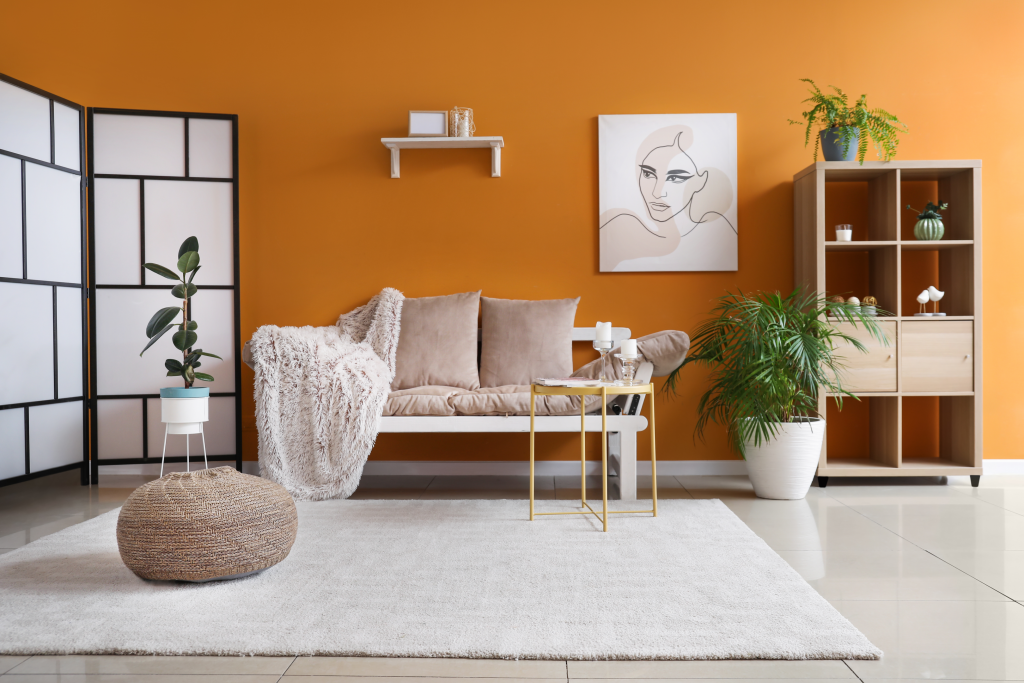
High-quality paints retain their colour better and are more resistant to peeling and flaking. Premium paints have longer lifespans than low-quality materials. Plus, they are more resistant to humidity and harmful UV lights.
While premium paints are a bit pricey upfront, they last longer so you won’t need to repaint your interior space more often.
Easier to Clean
Despite the significant time and effort you spend on the upkeep of your interior, the top coat will not stay perfectly clean over time. Scuff marks and fingerprints can make your walls look dirty.
High-quality paint coatings are more resistant to stains and are easier to clean. These coatings are also much easier to brush over. In comparison, coats with low-quality paint often have permanent markings on the surface as a result of frequent scrubbing.
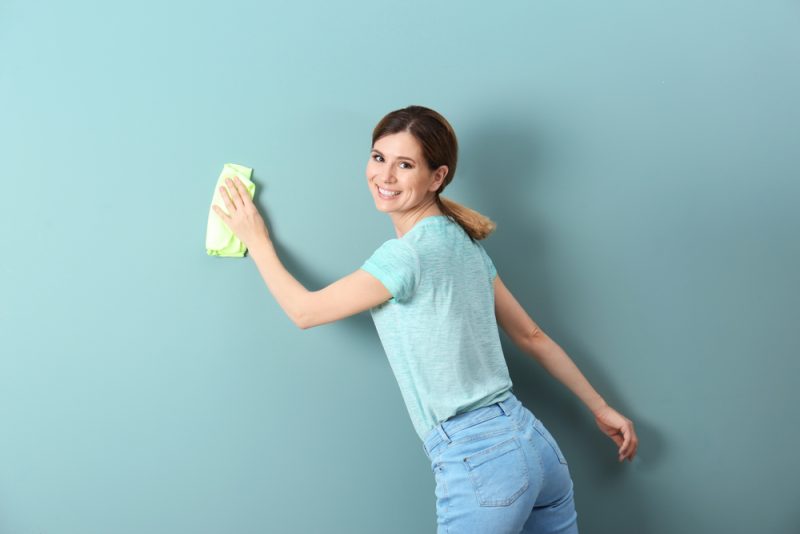
Covers Well
You’ll save money in the long run when you use high-quality paints to spray interior walls and ceilings. You want better quality materials that provide more paint coverage.
When you’re spraying ceilings, you don’t want something that’s going to have a lot of splatter. When you’re using low-quality paint, the splatter might be so much that you’ll feel it raining down on you. And so, a good quality interior paint for a spray gun is something you’re going to be looking for.
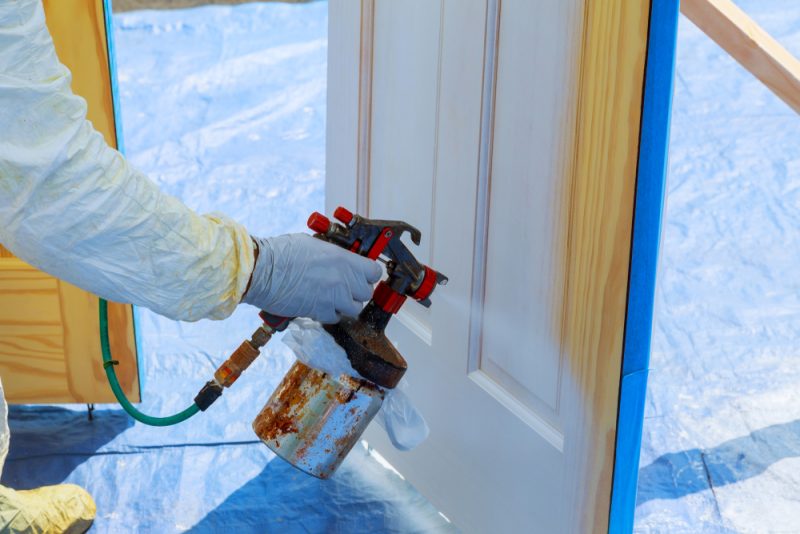
What to Consider When Selecting Interior Paint for Spraying
Surface Area
Rooms typically have four walls and it will take certain amounts of paint to cover a wall. Paint manufacturers usually provide a list of the amount of paint that will cover a specific surface area based on the type of paint.
Viscosity
This is the material’s thickness and structure. It is sometimes referred to as the paint’s body, which is either flowing or dense. High-viscosity paints are thicker and slow-moving. While less likely to splatter and drip, they may require longer drying time.
In comparison, low-viscosity paints are thinner and dry quickly. However, they are more likely to drip and splatter easily.
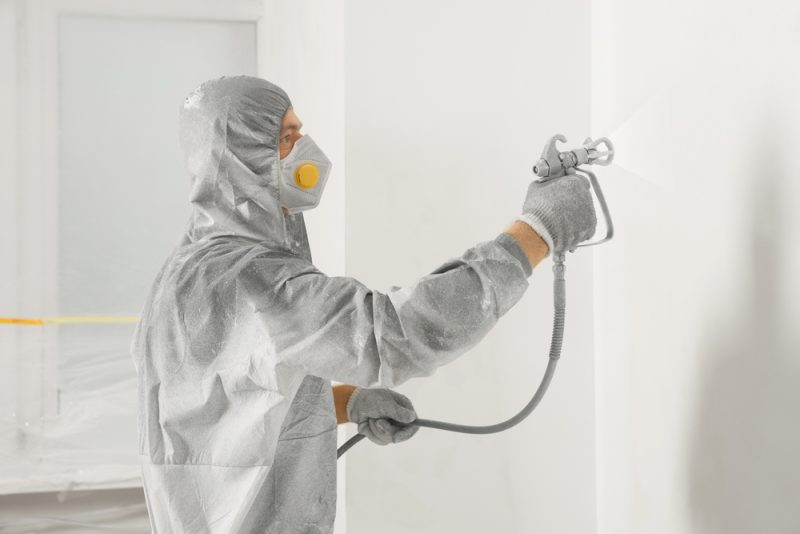
Types of Paint
Knowing which paint suits your needs will ensure your project goes without delays or difficulties. Some projects will call for an enamel paint with a glossy or matte finish, while others will require a latex paint with a satin finish.
True Lustre
Most paints will have a sheen to them while they are still wet on the surfaces. But true lustre is only revealed after the paint has dried. There are several levels of sheen and these include:
- Gloss
- Semi-gloss
- Eggshell
- Satin and
- Flat/matte
These levels of sheen differ from one brand of paint to another. For this reason, it’s crucial to know that a specific level of sheen you’re expecting from a particular brand lives up to your expectations.
Binding Abilities
Paints need a binding agent to be able to stick to surfaces. Binders are necessary to make sure there is maximum adhesion between the paint and the surface.
Generally, each type of paint requires a specific type of binder. Oil-based paints will require a binding agent different from those used in latex or acrylic paints.
Primer/Paint Combo
A paint primer is a base coat used for sealing a surface before applying the second coat. Primers enhance adhesion and ensure the paint job will last longer. An all-in-one paint and primer product can be useful in some projects.
Fume Factor
Paint releases VOCs or Volatile Organic Compounds. These chemicals have a strong odour and may be harmful when inhaled. VOC emissions from interior paints should be as low as possible.
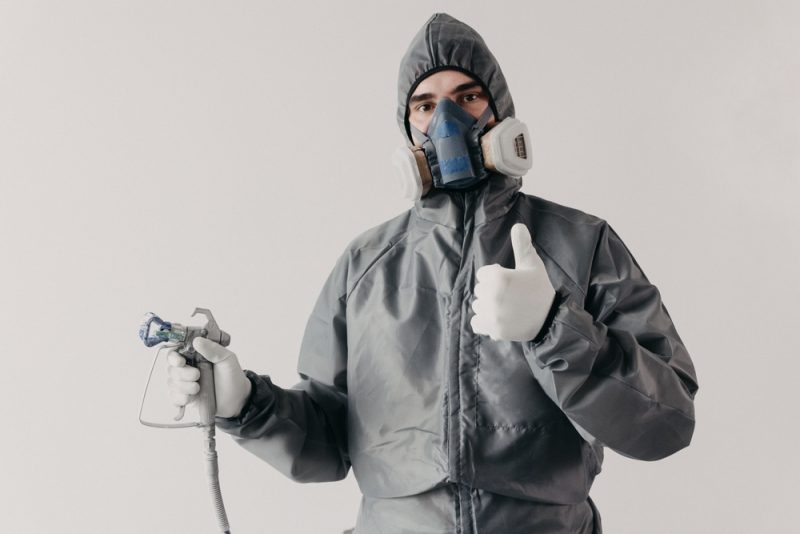
Reaction to Cleaning
Some areas of your home require more cleaning than others. Specifically, bathrooms and kitchens are some of the busiest areas in a home, which require cleaning more often. And so, the ideal interior paint for these areas is one that can withstand frequent scrubbing and washing.
Brand Preferences
With so many paint brands out there, choosing the right one for your DIY project can be overwhelming, especially if you lack experience. With this in mind, it is essential to work with a painting contractor who has experience with various paint brands and knows what would be ideal for your interior space.
At Renaissance Painting and Carpentry, we have amassed a wealth of knowledge especially when it comes to painting interior spaces. We work with premium paint brands such as Benjamin Moore & Co and Sherwin-Williams. We make sure your interior walls and ceilings are covered with the best options available.
Types of Interior Paints
Interior spaces are more sensitive to paint fumes than outdoor spaces. This means it is critical to use paints that release less harmful fumes. Thus, interior paints have lower VOCs than exterior paints.
When painting interior spaces, paint splatter matters a lot. And so, it is crucial to use low-splatter interior paint whenever possible.
Interior spaces are often exposed to humidity, which can lead to mould and mildew buildup. Some exterior paints have an ingredient that helps prevent such buildup. However, this is not something you’ll find in most interior paints.
Here are common characteristics of interior paints:
- Stain resistant
- Washable
- Abrasion resistant
- Not fade resistant
- Contains low VOC
- Cures without direct sunlight
- Has no fungicides
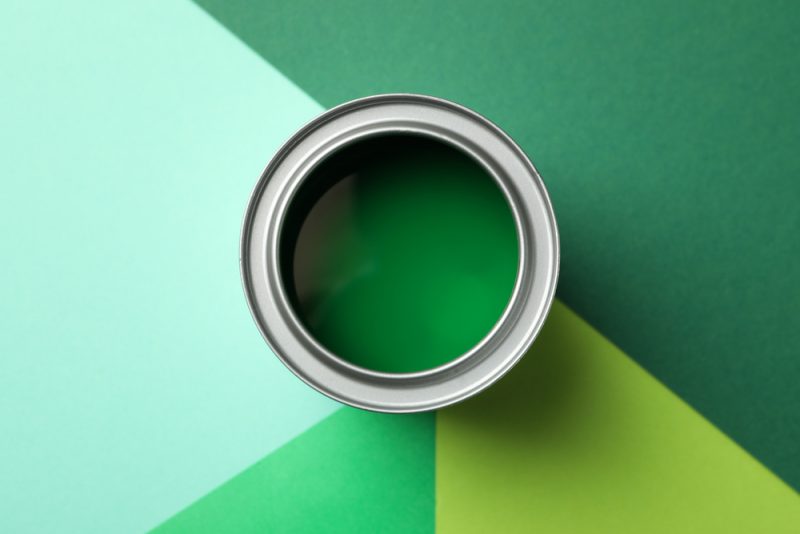
Primer and First Coat
Applying a primer coat before the first coat of paint may be necessary to ensure the surface looks great and lasts for many years. In some instances, the first coat of paint before the second coat can act as the primer coat. Primer coats are essential as they can cover stains and knock down odour.
Water-based Paint
Acrylic and latex paints are water-based materials commonly used for interior projects. The main advantage of water-based paints is that they cure without exposure to direct sunlight and they dry fast. Water-based paints are crack-resistant and are considered eco-friendly due to the low levels of VOCs.
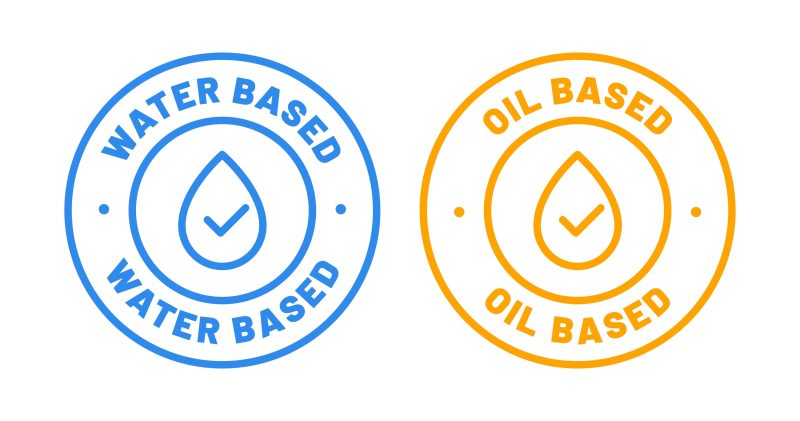
Oil-based Paint
Oil-based paints are another popular type of paint. They are considered premium because they are more durable and have a more attractive sheen than water-based paints. Oil-based paints are ideal for high-traffic areas.
Acrylic Paint
Acrylic paints are water-based and are among the most eco-friendly types of paint on the market. This type of paint is easy to apply and dries quickly.
Moreover, acrylic paint is the most preferred paint among painting contractors and property owners for its durability. It is also the most preferred paint for high-traffic areas.
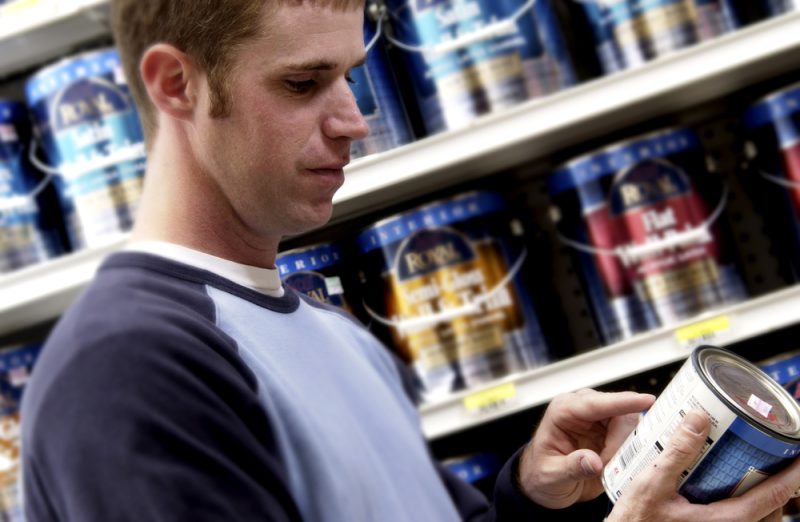
Latex Paint
Similar to acrylic paint, latex paint is water-based. Interestingly, latex paints don’t contain real latex proteins; they are made with synthetic latex. This type of paint doesn’t pose any problem for people with latex protein allergies.
Latex paints are ideal for covering large spaces. They are versatile and can be used on concrete surfaces, trims, and walls.
Enamel Paint
Enamel paints are similar to oil-based paints in terms of durability. Enamel paints are water-resistant and are resistant to some alkalis and acids. Also, some can be used for both interior and exterior projects. Check the label.
Concrete and Masonry Paint
Masonry paint is another water-based material used for both interior and exterior projects. Specifically, concrete paint is ideal for surfaces such as concrete and brickwork. It is an excellent dirt and water-resistant material for covering indoor and outdoor walls.
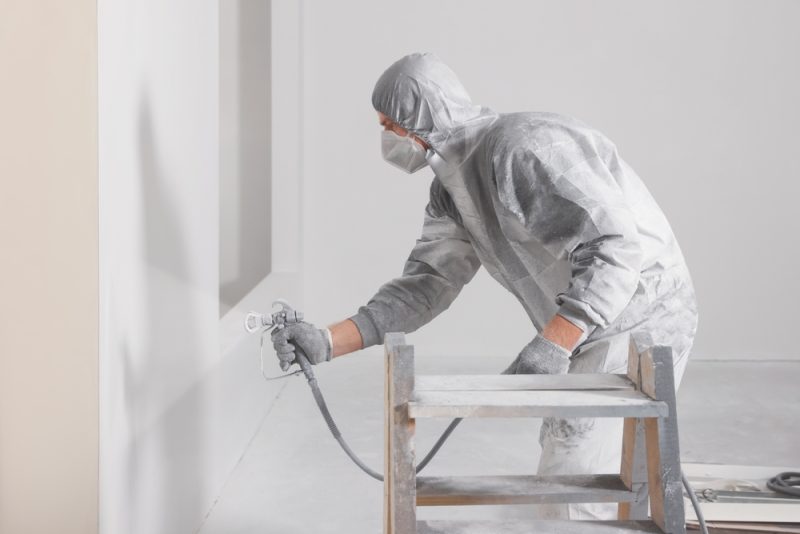
Types of Interior Paint Finishes
Paint finishes come in five sheens such as gloss, semi-gloss, eggshell, satin, and flat/matte.
Gloss
Gloss or high-gloss/high-sheen paint finishes are ideal for doors, trim, cabinetry, and other high-touch surfaces. They are easy to clean and exceptionally durable. High-gloss paint finishes cost more and take longer to cure.
Semi-gloss
Semi-gloss paint finishes are durable and mildew-resistant, making them ideal for bathrooms and kitchens. And like high-gloss finishes, they are among the most scratch-resistant paint options on the market.
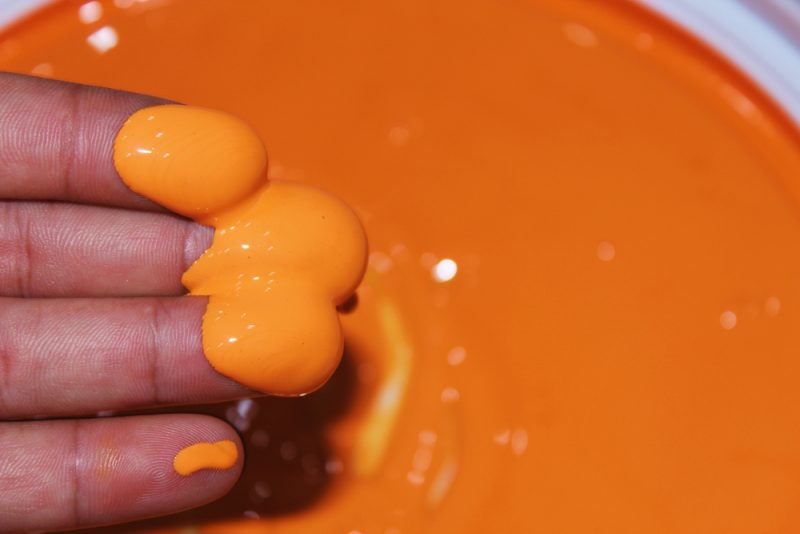
Satin
Satin is the most widely known interior paint finish. It has a velvety sheen and is easier to clean than eggshell and matte finishes. Satin is an ideal paint finish for high-traffic areas such as playrooms, family rooms, kitchens, laundry rooms, and bathrooms.
Eggshell
Eggshell paint finishes are a bit more lustrous than matte finishes and great at covering imperfections. They are best suited for low-to-medium traffic areas like entryways, hallways, and living rooms.
Flat/matte
Flat or matte has the lowest sheen of all interior paint finishes. They hide imperfections well and their coverage is excellent. They are best suited for ceilings and other low-touch surfaces since they are the least durable compared to other finishes mentioned above.
Choosing a Paint Sprayer for Your Interior Space: Airless Sprayers or HVLP?
An airless paint sprayer and a High Volume Low Pressure (HVLP) paint sprayer are both ideal for indoor use. But which is the best paint sprayer for your project?
Airless Paint Sprayer
An airless paint sprayer uses the material’s pressure without using air. Typically an electric motor and pump place the material under pressure, about 2300 PSI (pounds per square inch) transforming it into tiny droplets or mistlike spray. Be very careful… the spray is very dangerous due to the pressure.
An airless sprayer is best suited for painting large areas of interior walls and ceilings. Airless sprayers are excellent for a variety of paints, from latex paints to heavier oil-based paints. They can apply thicker paints on large interior walls in less time.
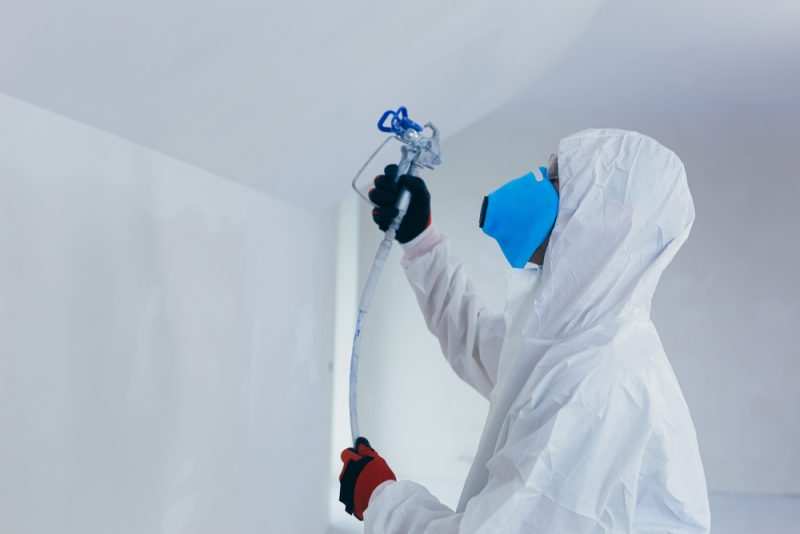
HVLP Paint Sprayer
High Volume Low-Pressure paint sprayers use high-powered turbine fans to push air and material through a gun nozzle. The material hits the surface at a more gentle, regulated speed.
HVLP sprayers are ideal for spraying trim. The high volume of air at low pressure produces a fine mist of paint with less overspray. They can seamlessly apply multiple thin coats of paint. HVLP paint sprayers are great for spraying paint on mouldings, trims, and other detailed surfaces.
You can use an HVLP sprayer for walls and ceilings; however, it is not recommended. It is not very efficient.
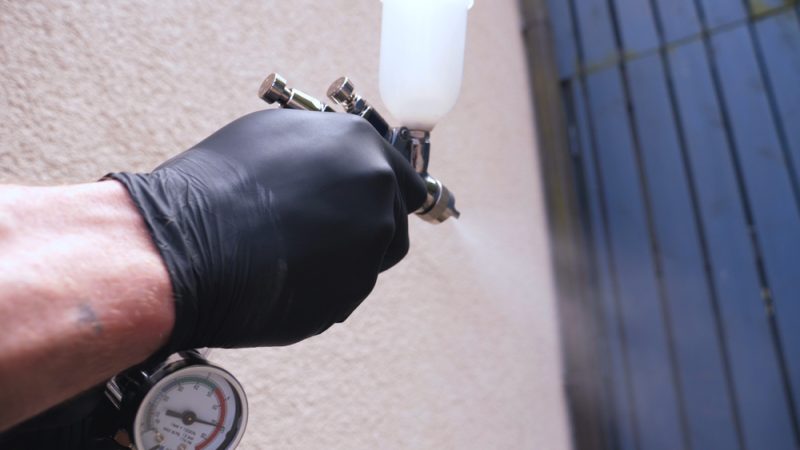
How to Spray Paint Interior House Walls and Ceilings
Prep the Area for Spraying Interior Paint
- When using a paint sprayer for your interior space, it is essential to prepare the area to ensure the project goes smoothly and achieves the best results.
- Remember, a paint sprayer produces tiny droplets (mist) of paint. If you’re not careful, this mist of paint can cover everything in your room. Thus, you need to cover (or mask) whatever you don’t want to be painted.
- Cover the floor with drop cloths. Tape the edges of the cloth to the edges of the wall.
- Remove heating and AC vent covers. Use masking tape to cover the outlets light switches, and skirting boards.
- Use plastic sheeting to cover windows, taping around the edges. Cover the doors as well. Make sure to seal off door jamb edges and doorways.
- Whenever possible, remove furniture from the room. If not, move them away from the wall and make sure to cover them with plastic sheeting.
- You might also want to allocate enough space for your tools and equipment.
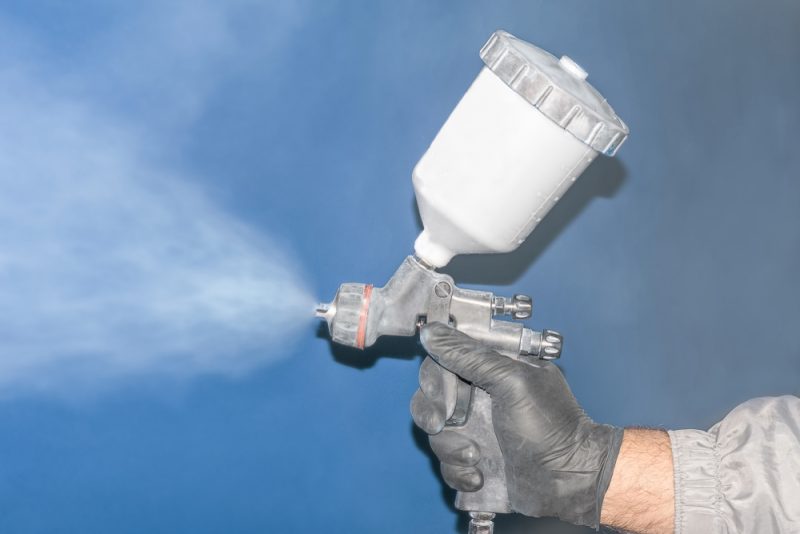
Using a Spray Painter Indoors
Here are the basic steps when using interior paint sprayers:
- Mix and then strain the paint before loading it into the paint sprayer. Use a funnel to fill the sprayer with paint.
- You might want to practise first before spraying paint on the wall and ceiling. Test your spray pattern on a piece of scrap cardboard or plywood. This way, you’ll be able to work out the proper distance, sticking to that distance as you paint.
- Move the paint sprayer before squeezing the trigger. When reaching the end of the pass, release the trigger before stopping.
- Avoid spraying in a wide arc. Doing so will cause the paint to be thinner on each side and thicker in the middle.
- When holding the spray gun, it should be about 12 inches away from the wall. When spraying, make sure your movements are smooth and even.
- Avoid bending your wrist when using a paint sprayer. Instead, move your entire arm as you spray. This will ensure even coverage on any surface.
- When you’re done using the spray gun, clean it using the appropriate solvent.
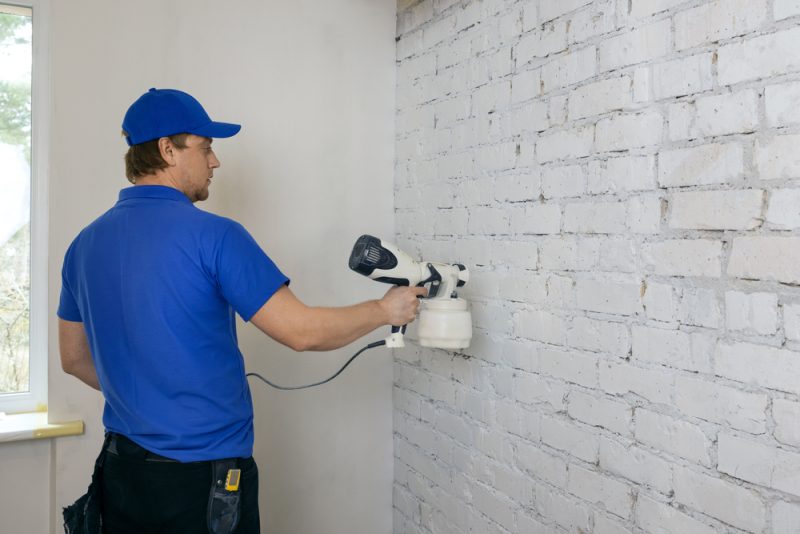
More Interior Paint Spraying Tips
Spraying
- Choose a spray tip suitable for the surface to be sprayed and the paint you are using. The size of the tip hole should not be more than the maximum capacity of your sprayer.
- When using paint from several containers or cans, you should mix all the paint from those cans into a clean, empty container. Doing so will ensure consistency in colour even if there are slight colour differences between the paints in each can.
- Start at the top when spraying walls and then work your way down. When working in sections, don’t go too far to areas that are uncomfortable to reach.
- Spray the outer edges first, creating a defined “band” of coverage and carefully addressing any corners. When dealing with inside corners, direct the spray tip into the corner to ensure it covers and overlaps both sides.
- Prioritize cutting around windows and doors first, carefully applying paint to create neat edges. Then, spray the remaining flat areas using overlapping strokes for consistent coverage.
- Continuously make multiple spray passes down the walls. Direct the spray tip towards the edge of the previous pass and create overlaps of about 50%.
Cleaning Up
- Give the paint enough drying time before removing the tape from the trim to achieve crisp, clean lines.
- Remove plastic sheeting from furniture and drop cloths from floors. Slowly and carefully roll the plastic when removing it to avoid the dust that’s clinging to the plastic from going into the air and ending up on the newly painted surfaces.
- Replace the lighting fixture you removed; move furniture and other items back into place.
- Clean your airless paint sprayers after every job. Follow the cleaning instructions found in the user’s manual.
Interior Spray Painting for Faster, Superior Results
You can spray paint interior walls much faster than using a brush or a roller. You’ll need preparation and practice to get better results. With the right pace and rhythm, you can learn to spray interior walls and ceilings faster or you can leave the paint job to professionals.
Why it’s Essential to Choose the Best Painting Contractor
Experience
When you try to do the painting project yourself, you will be more likely to make many kinds of mistakes. Your home’s interior could end up looking unappealing, or worse, you could injure yourself.
Many things could go wrong when you’re trying to DIY, which is why it is crucial to hire skilled and experienced professionals, especially those protected by insurance. This way, you won’t have to worry about spending more money if there’s an accident. Another thing to look out for is that the crew that will be working on your house should have valid licences.
Additionally, you might want to see if the painting contractor has had many happy clients they have serviced in the past. This way, you’ll have a good idea of what to expect.
Knowledge
Not only do experienced painting contractors have significant knowledge about painting jobs, but they also have connections with a variety of vendors. Accordingly, you will always get the finest outcomes at the most reasonable price.
A good painting contractor can provide a colour consultation for your home’s interior. They can assist you in choosing the best paint colours for the kitchen walls, ceilings, and other interior walls.
Equipment
You’ll have to consider purchasing the necessary equipment when you’re looking to DIY a project, which can be an extra expense on your part. Painting contractors have access to top-of-the-line painting equipment to provide your interior spaces with the best possible service.
Hiring a painting contractor ensures your projects are completed on schedule, within the budget, and with no (or minimal) damage to your home. Many skilled painters will work around the schedule; they may work beyond the 9-5 standard. They might even work on weekends if you’re on a tight schedule.
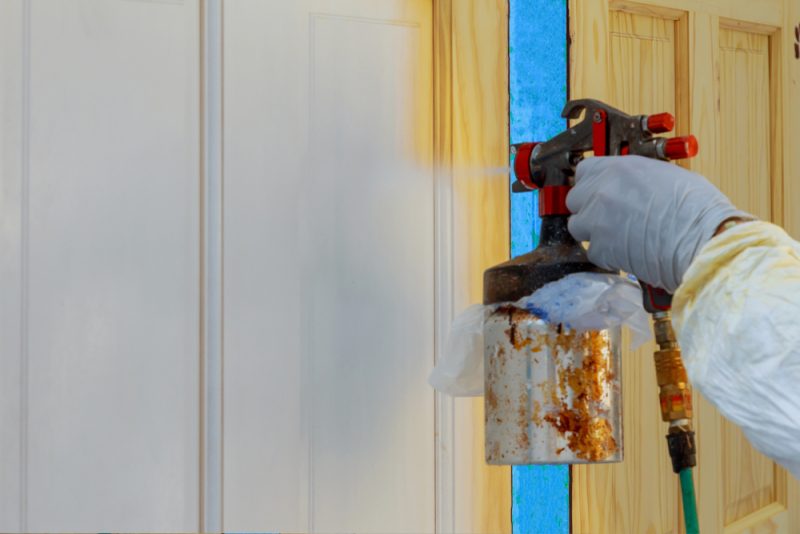
Let Professionals Spray Paint Your Interior for Maximum Results
If it sounds like too much time and trouble to master spray painting your home’s interior, invest in the services of a skilled painter. Renaissance Painting and Carpentry is a leader in interior/exterior painting, woodwork, and cabinetry. We use state-of-the-art equipment and cutting-edge techniques to suit all kinds of paint jobs.
Our expert interior spray painting service delivers mirror-like finishes faster than traditional painting methods would take. And definitely, much faster than the average DIY home painter.
Reach out to us to discuss how your home’s interior walls and ceilings can benefit from our advanced spray-painting services!
FAQs
Can I use exterior paint indoors?
You can use exterior paint indoors but you shouldn’t. Compared to interior paints, exterior paints contain harmful fumes that when inhaled, can cause discomfort in the eyes, nose, and throat. Prolonged exposure can cause dizziness, vomiting, difficulty breathing, etc.
Is it OK to spray paint interior walls?
Yes, it is okay to spray paint interior walls especially if you’re looking to paint a large area quickly and you want an even finish. Make sure you backroll after spraying.
How do you spray paint indoors without making a mess?
Preparation is crucial if you want to protect surfaces from overspray. We usually cover the floors with drop cloth or construction paper. We use plastic sheeting, tape, and masking paper to cover windows, doors, furniture, etc.

